Hundreds gathered in Dunfermline yesterday (Sunday 18 June) for the St Margaret's Pilgrimage.
The day started with an ecumenical service at Dunfermline Abbey before Holy Mass at St Margaret's Memorial Church in Dunfermline.
To see a photo gallery of the day, click here.
Homily of Archbishop Leo Cushley of St Andrews & Edinburgh
St Margaret’s Pilgrimage, 18 June 2023, Dunfermline
My dear brothers and sisters in Christ,
It is a very great joy to welcome you again to Dunfermline for our Pilgrimage in honour of our great queen, St Margaret.
I’m grateful to Fr Syriac and the people of St Margaret’s parish, including Colin and Amanda, the musicians and singers, the helpers and volunteers, and everyone in Dunfermline for their warm welcome to the town.
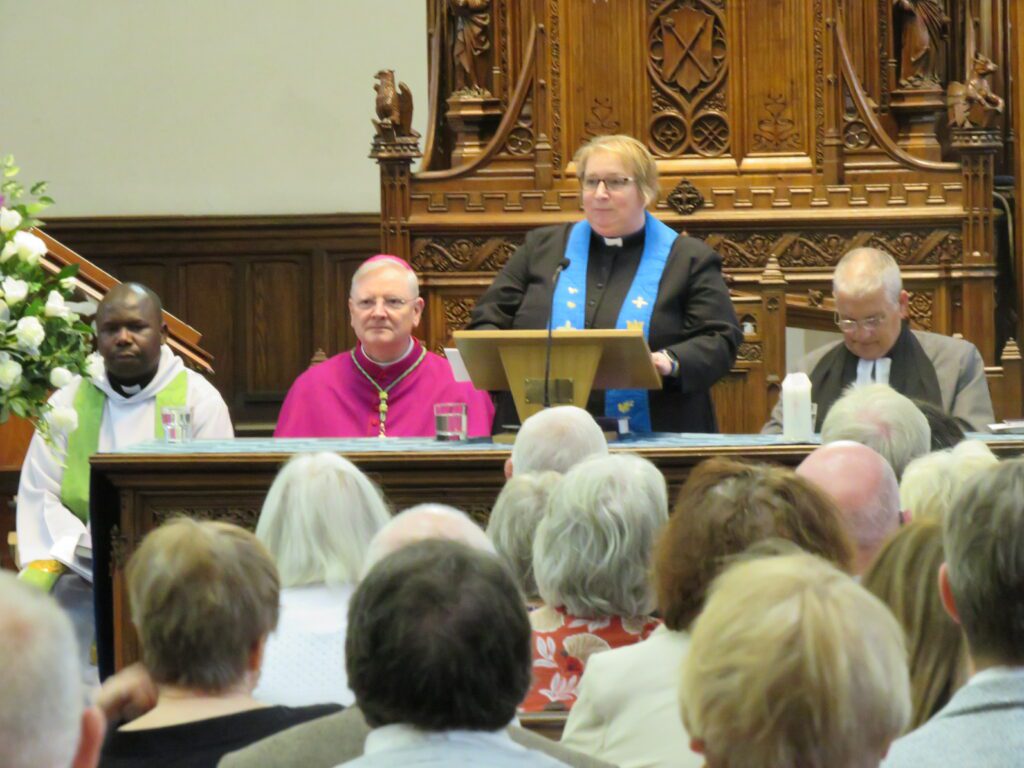
I’d like to thank the Reverend Mary Ann Rennie, Minister of Dunfermline Abbey, and her parishioners for their kind welcome this morning to the abbey, where we celebrated an ecumenical service in honour of St Margaret (above).
***
On the 16th of November last year, 2022, the official Feast as you know of St Margaret, many of us were at Dunfermline Abbey to remember the arrival 950 years ago of the first Benedictine monks at Dunfermline, who came to found a priory.
On that happy occasion, in the presence of HRH the Princess Royal, there was also the signing of a Declaration of Friendship, named in honour of St Margaret, and signed by Princess Anne, the Moderator of the Church of Scotland, and myself on behalf of the Catholic Church in Scotland.
Our @stcolumbasfife pupils Luke and Nicole joined pupils from @StMargaretsRCPS and @HolyNameRCPS at Mass with @leocushley for the St Margaret’s Pilgrimage today. They led our prayers of the faithful excellently! pic.twitter.com/I5EJKzXZAs
— St. Columba's RCHS - RE & Values (@REStColumbas) June 18, 2023
The Declaration is an endeavour to recognize and build upon the great progress that has been achieved in the last sixty years, recognizing each other as friends and as brothers and sisters in Christ, in praying and working together for the good of our churches, and in working shoulder to shoulder for the common good of everyone who calls Scotland their home.
The document had originally been described as a declaration of friendship, but I’m happy to say that, in answer to the suggestion of Dr Grant Barclay, a minister of the Church of Scotland, the document is now called the Saint Margaret Declaration.
Nevertheless, the original intention – that it be a declaration of friendship – still stands.
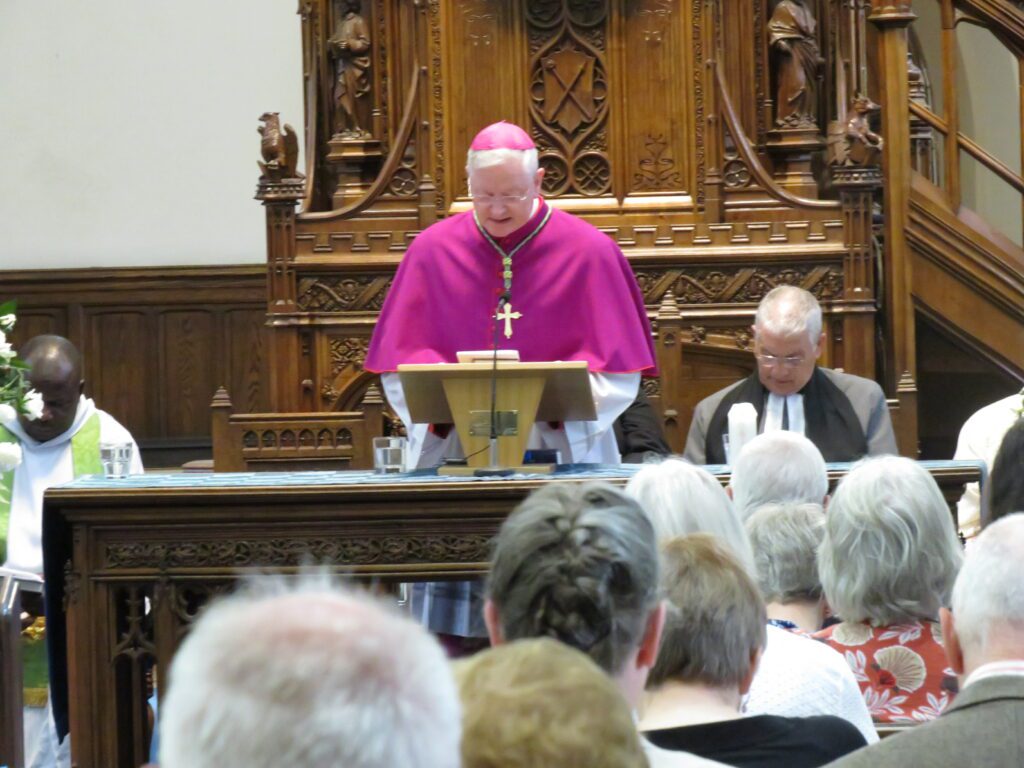
This is partly because an important part of the document is an attempt to recognize together all that we hold in common.
Both Pope St John Paul II and the late Pope Benedict are on record as saying that we have more in common with the churches of the Reformation than that which divides us from them.
I heard these words said in London in 2010, and I have reflected on them ever since.
So, about three years ago, I approached the then Moderator, Lord Jim Wallace, and the senior leadership in the Church of Scotland of the time, and they were very willing to discuss what such a declaration of might look like.
I received the blessing of our own bishops to carry out this dialogue, and within about a year, the draft document was ready.
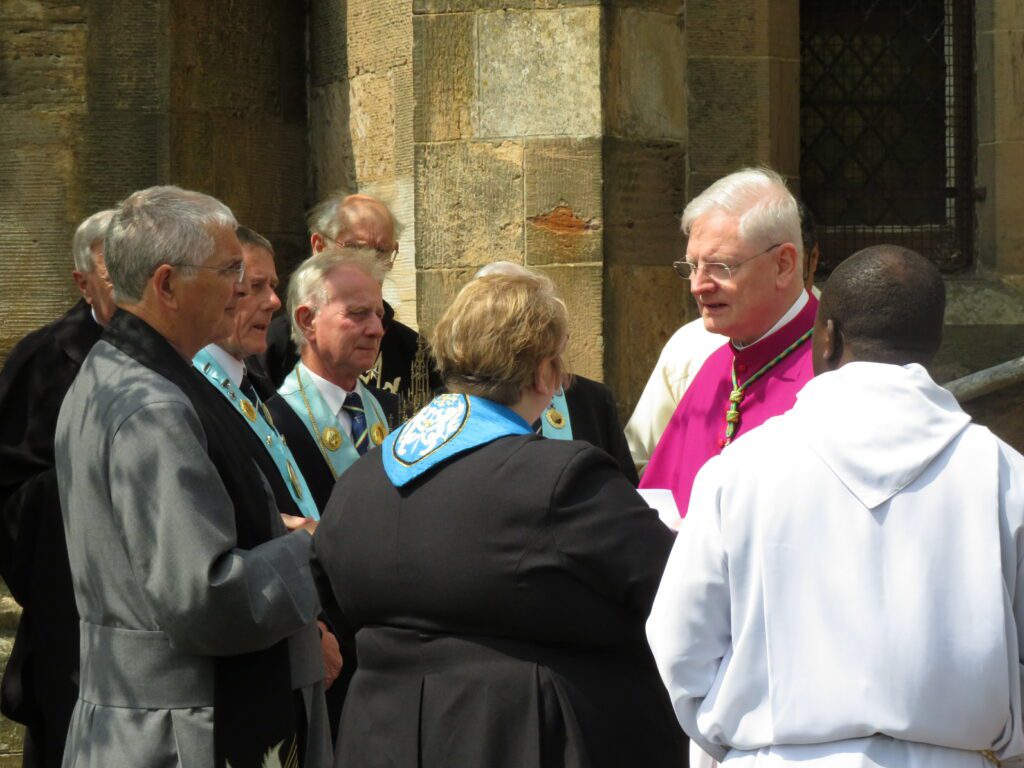
It was warmly welcomed by our bishops and it was also warmly welcomed at the General Assembly of Scotland in the summer of 2022.
One of the main foundations for it is a common will to preserve and promote and treasure our Christian heritage in this country, which goes back all the way to at least Saint Ninian in the far off fourth century, A.D. The declaration mentions St Ninian, St Columba of Iona, and St Margaret by name.
With our brothers and sisters in the Church of Scotland and the Episcopal Church, we have a shared admiration of who she was and what she did for our country, and that is not nothing.
Something of our common understanding of who she is, and that we share with her brothers and sisters of the Reformation churches, can be seen in our three readings today.
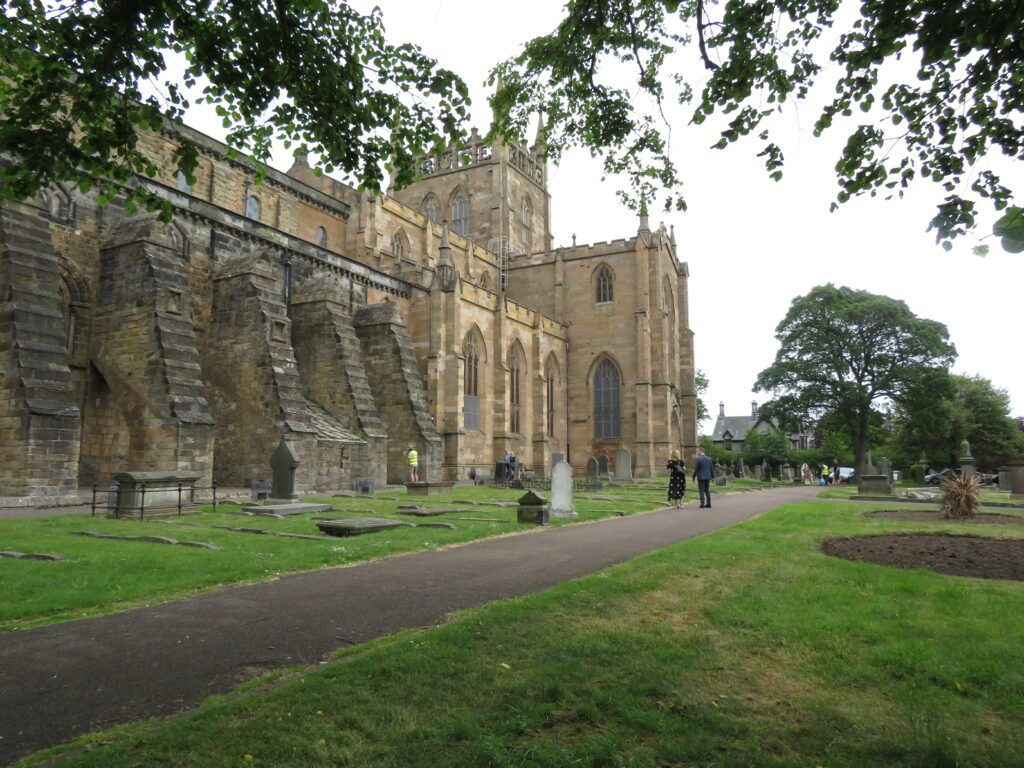
In the first reading from the Book of Proverbs, we see the picture of an ideal wife and mother.
Too often these days we find that kind of idea undermined, or knocked or belittled by people who think that being a wife, and being a mother, is something that is either far too difficult on the one hand, all the way through to being something outmoded or unnecessary in a modern and flexible society.
Margaret, however, is a strong and enduring example of someone who shows not only how well it can work, but how it can be the central nucleus in a full and fulfilling Christian life, and we can see in her biography, written by her Confessor just after she died, that she was flesh and blood too, a real wife and mother.
She was no plaster icon on a pillar; she was real, a flesh and blood saint.
In the second reading, we see the second great component of the character of Saint Margaret.
Through St Paul’s description of the higher gifts, we can see that how it all applies to Margaret, who also was “ambitious for the higher gifts”. She was deeply motivated by her love of Jesus Christ.
As Paul says, love is the best and highest element in our Christian discipleship.
Paul praises faith, hope, and love and compares them - but he declares boldly that the greatest of these great gifts is love; and Saint Margaret is a clear and vivid example of a consistent, hard-working, energetic love, through her personal attachment to people, especially the poor.
And the third component of her character that we see today comes from the Gospel of Matthew.
There our Lord says, if you listen to my words, and you act on them, you will be someone who built their house on rock. Rain fell, floods came, the winds blew and beat on that house, but it did not fall, it was built on rock.

This is a parable that St Margaret took to heart.
There are many pictures of Saint Margaret. Sometimes she is seen with a crucifix, because she called of one near the end of her life.
Sometimes she’s seen with a Book of the Gospels, because we know she carried one with her always, and it still exists to this day, and is kept in the Bodleian Library in Oxford.
But there is a third kind of image of her, including one in my own chapel in Edinburgh, where is Saint Margaret stands with a crown on her head and with a building cradled in her arms.
When we imagine her cradling a building in her arms, this is one image that has always made sense to me, that I add to the others.
To see her imagined carrying a building in her arms suggests Margaret as a builder; and not just a builder, but as a founder of churches. Now, Margaret didn’t found the Church in Scotland, its presence predates her arrival here by a good 600 years.
That being said, what she did do was to help “re-found” or re-imagine, or re-invigorate the Church here. She renewed it. She refreshed it, and she did so with great energy.
She was also clearing a path, as it were, for some things that she didn’t even live to see, but that were important and a direct consequence of what she did in her lifetime.
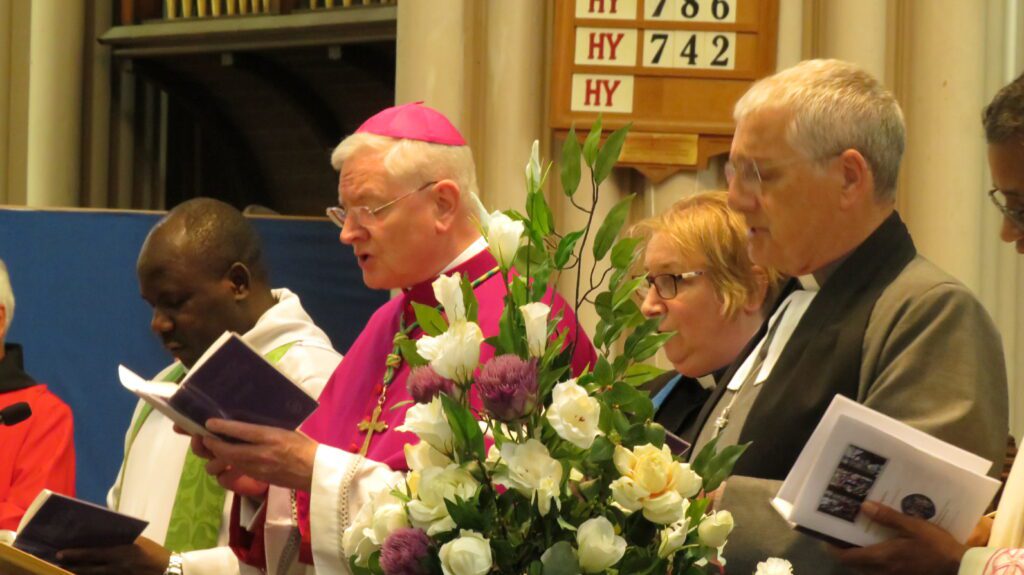
Her sons, starting with King Saint David I of Scotland, were in an excellent position after her death to invite many European monastic communities that were blossoming everywhere in Western Europe to come also to Scotland, and much of their presence and their heritage can still be seen today, particularly in the border country in our own Archdiocese of St Andrews & Edinburgh.
Many foundations, priories and parishes and other foundations were the consequence of the work that Margaret did for the strengthening of the faith in our land.
Margaret worked with energy and love for her family, her country, and her church. She had the humility and patience to prepare the way for others to complete the tasks begun by her.
And she did it with great heart, with great love. As we venerate her memory and her relics here, we pray again today for our families, our nation, our leaders, and our church.
May St Margaret’s example and prayers strengthen us in God’s service today and always.
Thank you for joining us today, and God bless you!
